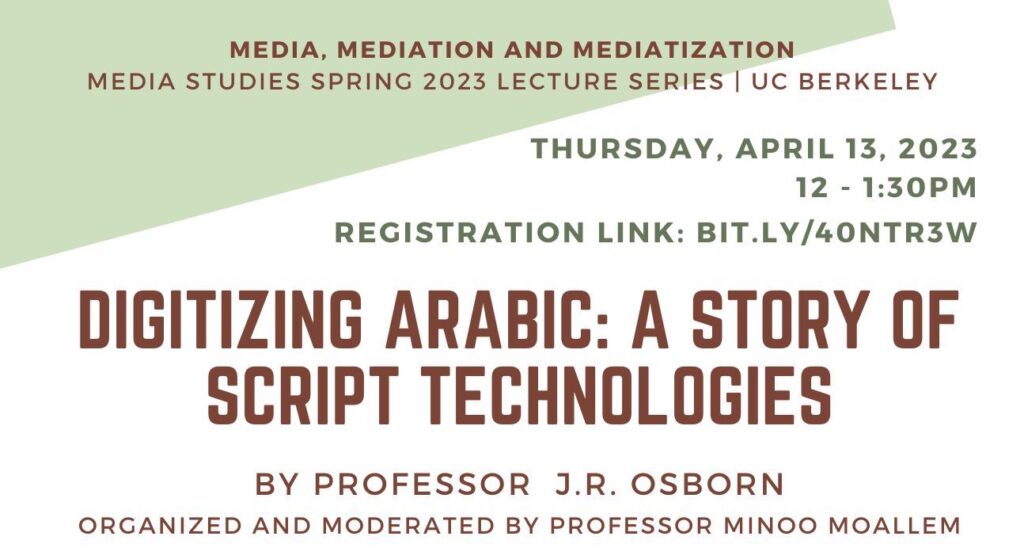Digitizing Arabic: A Story of Script Technologies with Professor J.R. Osborn
Co-sponsored by the Center for Middle Eastern Studies and Center for New Media
Thursday, April 13, 12 – 1:30pm, Via Zoom
The Latin alphabet and Arabic script followed very different trajectories from the handwritten page to the digital screen. Drawing upon my book, Letters of Light: Arabic Script in Calligraphy, Print, and Digital Design (2017, Harvard University Press), this talk examines Arabic script in relation to three moments of technological transformation: the formalization of calligraphic tradition (al-khatt al-mansub) in the 10th century, the spread of moveable type in the 15th century, and the rise of digital computing in the 20th century. Moving across calligraphy, print, modernity, and computing, the talk questions commonly accepted histories of the book, which are often drawn from European and American contexts. Arabic script remains one of the most widely employed writing systems in the world. By reexamining its unique history, we open exciting possibilities for the future of design.
J.R. Osborn is a scholar and experimentalist of communication. His work explores media history, semiotics, communication technologies, visual culture, and design aesthetics with a regional focus of the Middle East and Africa. Dr. Osborn is Associate Professor of Communication, Culture & Technology (CCT) and Co-Director of the Iteration Lab at Georgetown University. His book Letters of Light: Arabic Script in Calligraphy, Print, and Digital Design (2017, Harvard University Press) won the 2018 British-Kuwait Friendship Society Book Prize and received an Honorable Mention for the 2018 Albert Hourani Book Award from the Middle East Studies Association (MESA). The book follows the story of Arabic script and technology, from the advent of calligraphic tradition through the implementation of the Unicode standard. Dr. Osborn also produced, co-directed, and edited the feature documentary Glitter Dust: Finding Art in Dubai (2012), and he co-authored African Art Reframed: Dialogues and Reflections on Museum Culture (2020, University of Illinois Press) with Bennetta Jules-Rosette. Most recently, he received a Petra Kapper Fellowship from the Centre for Manuscript Studies (CSMC, Universität Hamburg) for “Diagrammatica,” a cross-cultural and comparative research archive of diagrams and information visualizations.

